On August 19th, 2019, NASA announced that their Europa Clipper mission has been approved to move to the next phase of the mission, progressing to the final design stage.
Mars is the place that most of our spacecraft, landers and rovers are studying, searching for any evidence that life ever existed somewhere else in the Solar System.
But talk to planetary scientists, and they’re just as excited about the ocean worlds of the Solar System; the moons, asteroids, dwarf planets and Kuiper Belt objects where there could be vast oceans of liquid water under thick shells of ice.
The perfect environment for life to thrive.
We’ve only had tantalizing hints that these oceans are there, but NASA is building a spacecraft that will study one of these worlds in detail: the Europa Clipper. And they’re not the only ones. The European Space Agency is building their own mission, the Jupiter Icy Moons Explorer.
Astronomers have known about Europa and the rest of the large moons of Jupiter since they were discovered by Galileo in 1610. But it was in the 1960s that ground-based telescopes from Earth started to study the moons with enough detail to realize that they contained large amounts of water ice.
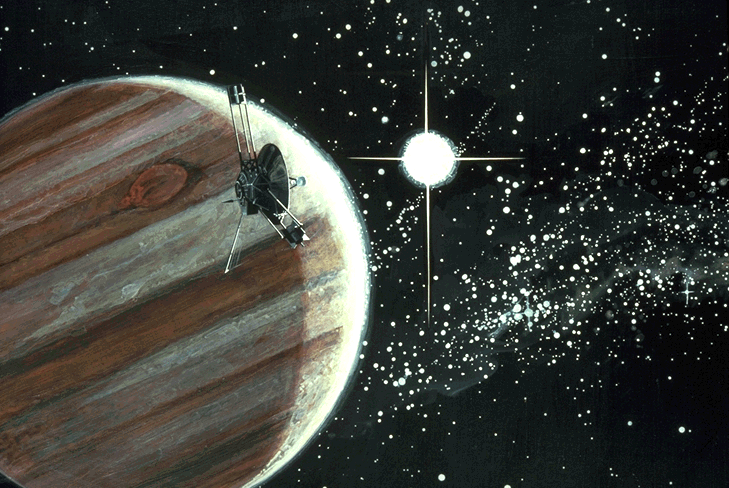
NASA’s Pioneer 10 and 11 flew past Europa in the 1970 confirming its icy exterior, but it was really the twin Voyager spacecraft that gave us our best view, revealing features on the moon as small as about 2 kilometers per pixel.
Their images showed how the surface of Europa is bright and icy, covered with bizarre stripes that look like cracked ice. And unlike other worlds in the Solar System, Europa had very few impact craters, which meant that it was being constantly resurfaced by fresh material, like a space Zamboni.

The Galileo spacecraft arrived in the Jovian system in the 1990s, bringing an orbiter that would remain in the area, studying Jupiter and its moons in tremendous detail. Over the course of its mission to Jupiter, Galileo made 12 separate flybys of Europa.
Observations from Galileo helped planetary scientists calculate that the subsurface ocean on Europa probably had more water than the Earth. Galileo’s cameras revealed huge sheets of ice that broke apart, with fresh water welling up to fill in the gaps. Clearly this is still an active world.
The activity comes from the tidal interactions with Jupiter, similar to the tides we have here on Earth with the Moon, except on a dramatically larger scale. They cause Europa to flex back and forth during its orbit, increasing the amount of heat inside.

We can see the dramatic effect of this tidal flexing with Jupiter’s closest moon, Io, which is the most volcanically active place in the Solar System.
Europa could have volcanism too, down deep beneath the ocean, providing energy and the raw material that could help life thrive.
To study Europa up close, to answer these questions, NASA is building an orbiter – and maybe even a lander – and it’s called the Europa Clipper.
The name comes from the old clipper ships that used to sail the oceans in the 19th century. These were three-masted ships that moved tea and other goods across the Atlantic Ocean.

And like these ships, the Europa Clipper will sail past Europa every two weeks or so, scanning its icy surface, and searching for evidence that Europa could have all the raw ingredients for life: liquid water, energy and chemicals.
Although its destination is Europa, it won’t remain in orbit that close to Jupiter’s powerful radiation belts. Instead, it’ll make a long orbit around Jupiter that brings it back every few weeks, so it only has to spend a short period of time in the radiation zone.
Europa Clipper’s Instruments
Mission planners have largely settled on the instrument package that the Europa Clipper will carry on board.
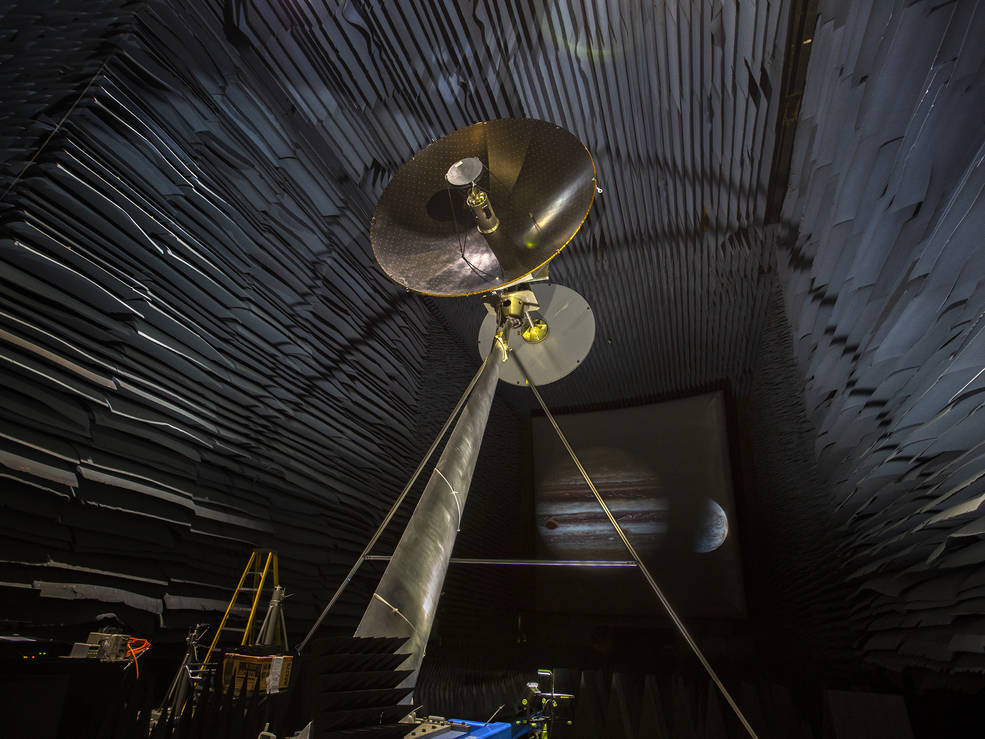
Of course, there will be the high resolution camera to provide images of the surface of Europa with 100 times more clarity than the best images taken by the Voyagers. It will map most of Europa to a resolution of 50 meters across.
It will also have a plasma instrument and magnetometer to measure the magnetic field around Europa in more detail.
A mapping imaging spectrometer to map out the organic chemicals, salts and other material in the interior of Europa.
A thermal emission imaging system to sense any changes in temperature across the surface of Europa, locating warmer places where liquid water could be upwelling from beneath the surface.
A mass spectrometer to determine the composition of the surface chemicals.
An ultraviolet spectrograph to map out any water plumes that could be ejecting from the surface of Europa and out into space.
A dust mass analyzer to see small solid particles ejected from Europa.
And most excitingly, a ground-penetrating radar that could peer down through the ice on Europa, to map out the thickness of its icy shell and subsurface ocean. It could help discover pockets of water closer to the surface, which might be an ideal place for future missions.
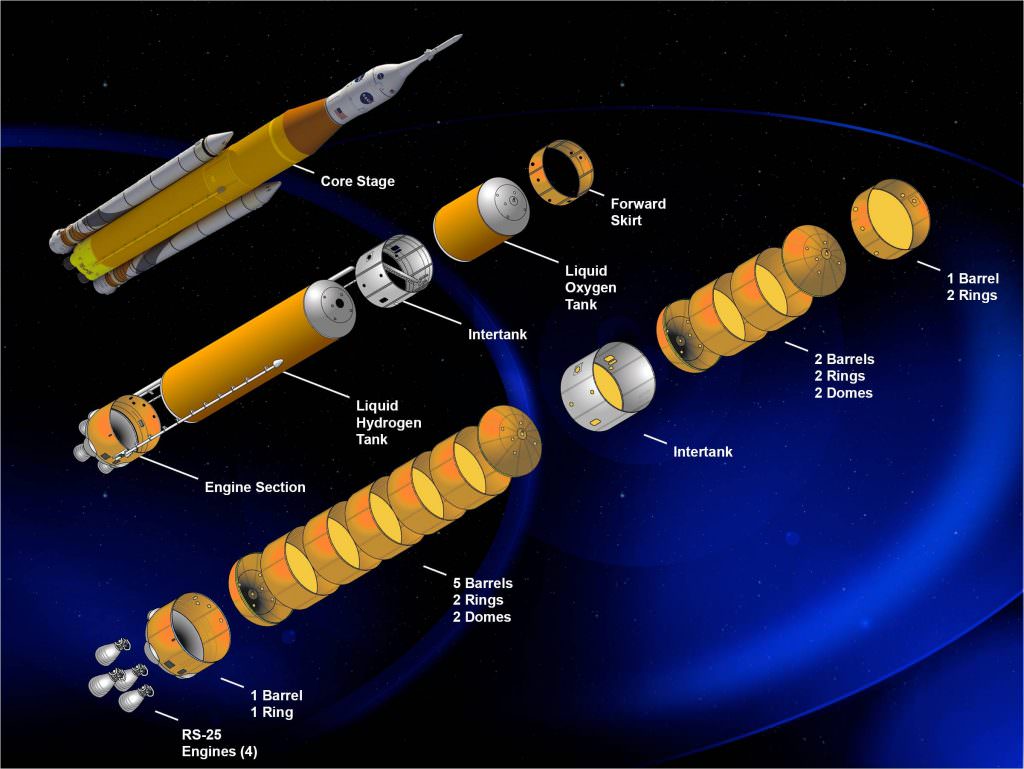
Trajectory and Launch
The Europa Clipper is expected to be launched on NASA’s Space Launch System, which is still under construction as I’m recording this video in 2019. SLS has a few missions to launch for the Artemis program, but it’s expected to launch the Europa Clipper in 2023.
This is the ideal launch vehicle, since it would be able to send the spacecraft on a direct trajectory which would take it to the orbit of Jupiter in just three years.
But if the SLS isn’t available for some reason, then it could also launch on a Falcon Heavy or a Delta IV Heavy. Instead of a direct flight, they’d need to make a few gravitational flybys of Earth and Venus to make the journey. In fact, according to some estimates, by switching to a Falcon Heavy, NASA could save enough money to send a similar mission to Saturn’s icy moon Enceladus as well.
And who knows, the SpaceX Starship could be flying by then and would make the ideal launch vehicle.
Evidence for Icy Plumes
In preparation for this mission, planetary scientists have been scanning data from older missions and they’ve found something very exciting. There appear to be plumes of material blasting into space from Europa, similar to the ice-volcanoes that Cassini found on Saturn’s moon Enceladus.
In 2012, ultraviolet images from the Hubble Space Telescope hinted that there were plumes on Europa, but the data was inconclusive. Planetary scientists realized that Galileo made a flyby of the exact same region in 1997, and it had recorded data about Europa’s magnetic field.
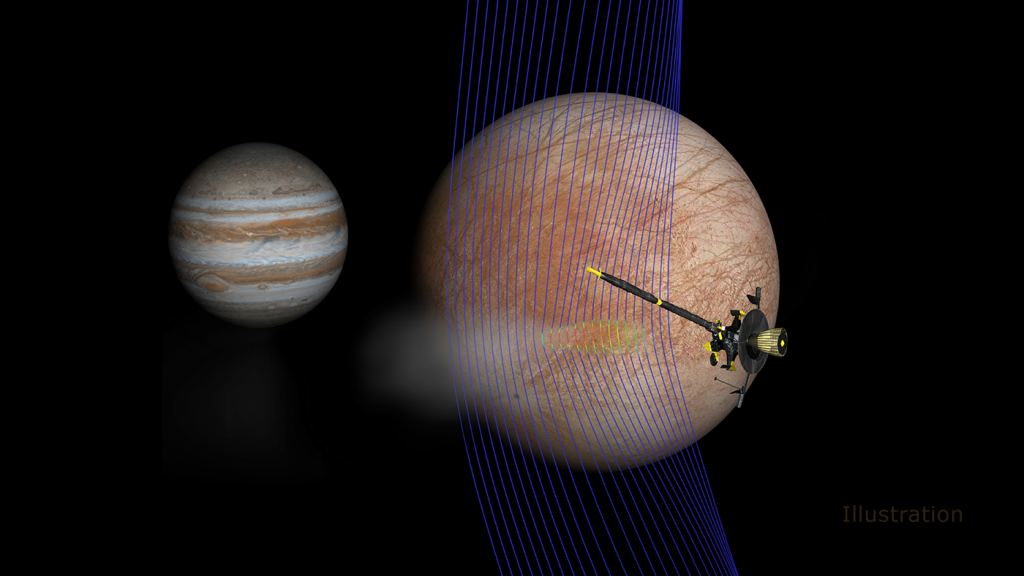
Cassini had helped astronomers realize that icy plumes cause a characteristic blip in the magnetic field.
It turns out, Galileo had flown right through the plume, and recorded the event as a bend in the magnetic field in the region.
When the Europa Clipper arrives, it’ll make a series of low-altitude flybys of the region. But this time, scientists will be ready, and they’ll know what to look for. The spacecraft will be equipped with instruments that will be able to sample the frozen liquid and dust particles thrown into space. It’s the next best thing to actually being able to sample the ocean directly.
Maybe a Lander too?
Nothing’s decided yet, but US Congress has been advocating for a lander to come along on the mission, touching down on the surface and sampling the world up close. This is actually a controversial decision, since it doesn’t entirely make sense to send in a lander without having a detailed map of the surface of Europa.
If you only get one shot at landing on Europa, it makes sense to map out the world in great detail first. Then choose a landing site and send a follow up mission to explore interesting regions.
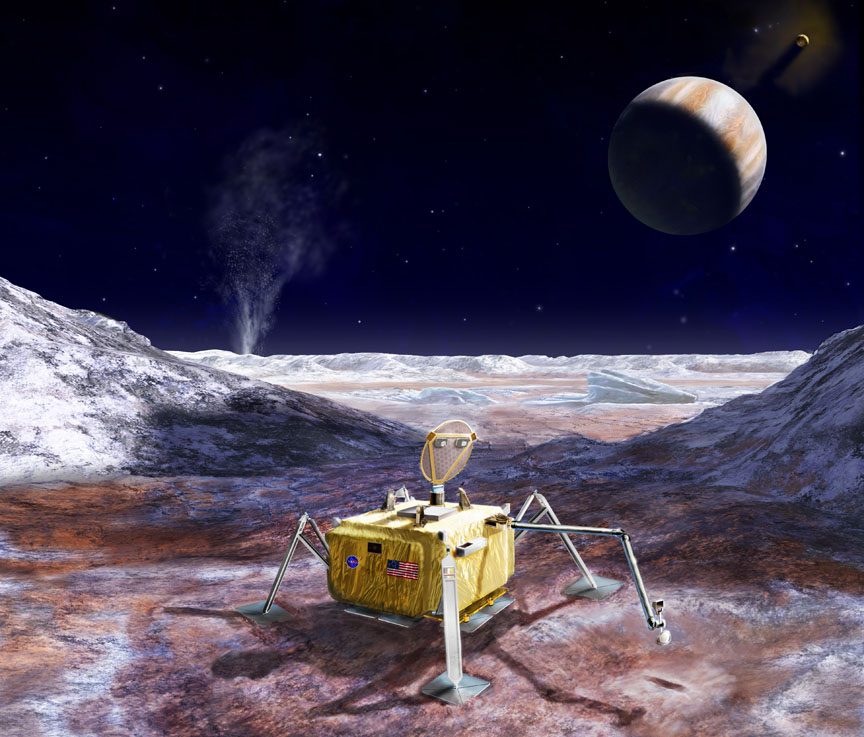
But Congress actually awarded NASA $195 million in 2019 for the development of a Europa lander, and earmarked future spending as well.
This isn’t a mission that was requested by NASA, but driven by Congress, of course, landings are exciting to the public, and could help drive enthusiasm for the mission, and space exploration in general.
If a lander does make it down to the surface of Europa, it could actually face very difficult terrain. A new study calculated that the surface of Europa might be the perfect conditions for creating penitentes. These are tall jagged blades of ice that form when water sublimates, going directly from ice to gas. They’re found in high-altitude regions in the topics on Earth, like the Andes mountains.
And in the lower gravity of Europa they could grow 15 meters tall – triple the height of Earth. Any lander would need to be able to sense and navigate around these ice spears without any real-time assistance from Earth.

ESA’s Jupiter Icy Moons Explorer
When it comes to Europa, NASA isn’t the only game in town. The European Space Agency is working on their own mission to Europa: the JUpiter ICy moons Explorer, or JUICE. This is the first large-class mission of ESA’s Cosmic Vision program.
Unlike the Europa Clipper, JUICE will spend three years studying Ganymede, Europa and Callisto, all three of which are thought to contain a subsurface ocean. By studying all three of these worlds in turn, it’ll provide a comparison between them, helping planetary scientists figure out what conditions are best for life.
As with Europa Clipper, JUICE will have a suite of science instruments on board, which will help it map out the surfaces of the three moons, as well as a get a glimpse into their icy interiors and subsurface oceans.
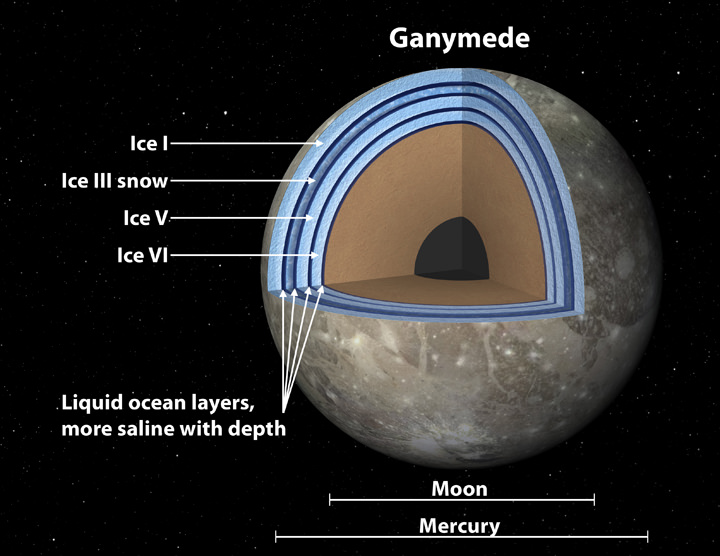
It’ll map out Ganymede’s magnetic field, the only moon in the Solar System known to have one, which is thought to be caused by a rotating core of liquid metal. It’s strong enough to create auroras in the sky above Ganymede, even though it’s embedded inside Jupiter’s enormous magnetosphere.
For Europa, it’ll help in the search for the chemicals of life, organic materials that could be on the surface, tenuous atmosphere, and welling up from inside.
And JUICE will also be equipped with a radar system that will measure the depth of its subsurface oceans.

If all goes well, JUICE will launch in mid-2022 – ahead of Europa Clipper – on board an Ariane 5 or Ariane 64 launch vehicle. It’ll take 7.5 years to get to Jupiter, making flybys of Earth, Venus and Mars, arriving in 2029.
We’re going to Europa. As early as 2022, two missions could be blasting off to study the icy moons of Jupiter, arriving before the end of the decade to study them up close. One of the best places in the Solar System to search for life, and we’re just a few years away from a spacecraft’s arrival. Maybe even multiple orbiters and even a lander. It’s a pretty exciting time in space exploration.


My personal priorities for space, in order:
1. Impeaching the criminally unsane President and firing the current Nasa Administrator. Appoint a new Space Council with no others from the Military-Industrial Complex allowed. We need sane and adult supervision to run the space program. Cancel Artemis and the SLS insanity. Drive our effort as international as possible, for all humanity. Be prepared to lead but worthly of earning that leadership.
2. Biosphere III – learn to create a self-sustaining biosphere when humans could thrive in shorts and T-shifts for the long term, building on the lessons of Biosphere II. Then only microgravity and radiation would be an issue in a space habitat. Still big problems, but the complexity of a self-sustaining ecosystem is not a small thing!
3. Von Braun Station as envisioned by the Gateway Foundation.
4. An Asteroid Capture Mission and investigate mining, smelting, and fabrication of structures in space as well as fuel and air from an asteroid.
5. The Eupora Clipper, with an orbiter, lander AND a probe to scoop a bit of fluid of a European geyser and return the sample to Earth. This scooping probe could lag behind the orbiter-lander combo to map the best geyser to scoop. Maybe send the Scoop on a free return orbit. I have not the maths to determine that will be possible. I hoping to capture European DNA.
6. A moon base with a mass driver to provide the ability to launch both material and fabricated structure to L4/L5 and elsewhere as proposed by the great Gerald O’Neill.
7. LUVIOR!! Then later a LUVIOR factory!
8. More robot to search for life on Mars. Floating platforms are is possible on Venus, for robots.
9. Kalpara One or maybe the full Gateway Station, I not sure. Get Kalpara Two self-sustaining and working then move to Mars. It will have a factory for exploring Mars by robots with VR. Repeat for all the interesting spot in the solar system.
10. Colonize the Milky Way. I leave the details for future souls.